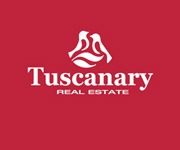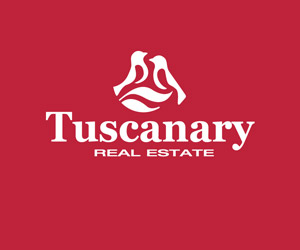Winemaker Dominique Genot
a French Winemaker in Maremma at Caiarossa
An interview with one of the youngest winemakers in Maremma: Frenchman Dominique Genot, enologist and director of the vineyards and winery of Caiarossa in Riparbella.
After completing his degree from the University of Dijon in agronomy in 2003, Dominique worked in the Napa Valley, New Zealand and the vineyards of France. And whilst finishing his specialization in viticulture at the University of Bordeaux in 2006, he became enologist and director at Caiarossa in 2006: an impressive appointment for a young post-graduate.

The Italian vineyards and winery at Caiarossa are situated in the heart of the Val di Cecina close to the coast and within the protected wildlife area called, "Il Giardino" (the Garden).
Originally established in 1988 by Belgian film and music producer Jan Theys, and known as "Serra all'Olio", they were purchased in 2004 by winemaker and Dutch buisnessman Eric Albada Jelgersma who also owns Château Giscours and Château du Tertre in Margaux in Bordeaux.
Caiarossa today comprises of twelve vineyards with eleven grape varieties.
The Interview
What made you decide to become a winemaker?
Having nobody in my family involved in the wine business, this is purely by passion for the products, for wines that I started to study winemaking in France.
How does a French winemaker come to be in Maremma, at Caiarossa?
The reason is that there is a strong connection between Caiarossa and Bordeaux, as the owner of Caiarossa owns two very important Chateau in the appellation Margaux, Chateau Giscours and Chateau du Tertre. I have been recruited in Bordeaux and sent to work in Tuscany, in this wonderful region that is the coastal area.
Caiarossa is a relatively new winery in Maremma: what have been the major hurdles in getting the vineyards established and the wines recognised by the international wine world?
When you start a vineyard from scratch, it takes a very long time before to see the results of all the works done and one must be very patient and passionate to do this kind of investment. At the beginning, the main difficulty is to do a good job in choosing the varietals, in preparing well the land for the plantation and then in our case, starting directly to grow the vines with the Biodinamic method.
Then for the wines, it took us about 7-8 years (since the plantation of the first vines) to get known by the main wine journalists in the world, and then for some of them it took even longer for having good to excellent critics on our main product, the red Caiarossa. So to resume, it is in our case a matter of quality first and then of communication.
What do you consider to be the biggest challenges now for Caiarossa?
Having already 16 ha in production and a flagship wines getting always more and more renowned, the biggest challenge for me is now to set up a brand new vineyard on the other side of our village, Riparbella. This one will be as big as the old one (other 16ha), but it will be located on some different kind of grounds, a lot more clay, and 100m higher in altitude. This land was not cultivated for years and there was just a few olive trees in the middle, so we have to create something totally new there, focusing on keeping the integrity of the natural soils.
Under whose influence was were the concepts of oriental Feng Shui applied to the design and colours of the winery? I suspect that it is unique in Maremma if not in the whole of Tuscany.
This was the direct influence of the first owner of Caiarossa, a Belgian gentleman called Jan Theys, who was keen to create a special winery, a place where harmony was the main leitmotiv. And Feng Shui was a means to reach this objective. The architect that designed it applying this discipline was from Switzerland, his name is Michael Bolle.
Are the grapes and olives at Caiarossa grown organically? If not, is that something the estate is considering for the future?
We are growing both grapes and olive, not organically but with the Biodinamic method, which is even more restrictive. For this, we have a double certification, Ecocert for organic growing and Demeter for Biodinamic agriculture.
If someone reading this was contemplating establishing a vineyard in Maremma, what advice would you give them?
First consider that to establish a vineyard from virgin land is an expensive and long term investment. If your aim is to make a high quality red wine, eventually aged in barrels, be aware that you would not have any positive cashflow during the first 5-6 years. So, one should make a good projection before to start this kind of investiment, to make sure that he is wealthy enough to do it. Then another advice would be to avoid to build a winery until you are producing a sufficient amount of grapes. For the first year of production, most of the time a “garage” could be enough!
Which Maremma wines would you recommend to someone contemplating purchasing them for the very first time? And what foods would you pair with them?
Well, honestly I can easily recommend wines but for food matching, I am not very skilled!
So for the wines, I would recommend to follow the coast from the northern part of Maremma (Maremma Pisana) and go down to finish in the south part of Tuscan coast, south of Grosseto.
Start with the excellent Veneroso from the estate Tenuta di Ghizzano, based on Sangiovese and completed with Cabernet sauvignon. Then going south, stop in the Montescudaio DOC area and try wines from Riparbella (La Regola 2004, Duemani 2006, and Caiarossa of course!) and around from the villages of Montescudaio, Casale Marittimo, Montecatini, etc.
Then in Bolgheri, I would recommend the wines from Massimo Piccin, Podere Sapaio or if you want to try one of the most famous wines of whole Italy, Ornellaia.
Then, you reach the Suvereto area with some big famous names as Petra and Tua Rita.
Close to Grosseto, one should go discover the Morellino di Scansano DOC and it’s nice Sangiovese wines. An excellent ambassador of these wines would be the Poggio Valente from Tenuta Le Pupille.
This is already a long list and even if there are some more interesting wines more on the south, I know them less than the ones I just told you before.
What do you consider to be the top three wines from Maremma?
Hard question… Ornellaia, Paleo rosso (Le Macchiole) and I would say Tenuta di Valgiano but I don’t know if Lucca is still part of the Maremma… but it’s very close anyway!
What is your favourite place in Maremma?
I love the natural hot springs of Saturnia, and the rock coast between Castiglioncello and Livorno.
How may my readers taste and purchase your wines?
The best place to taste is always in the winery itself (open to the public during the working days) or otherwise in the good Enotecas/wine bars around us (Bolgheri, Riparbella, Montescudaio,…).
Otherwise if you want to buy our wines abroad, have a look on our website www.caiarossa.it and see the section “distribution”.
My thanks to Dominique for taking the time out of his busy schedule to be interviewed by The Maremma Guide.
The vineyards and winery of Caiarossa may be found at:
Località Serra all'Olio, 59
56046 Riparbella (Pisa)
Tel: +39 0586 699016
Fax: +39 0586 696749
www.caiarossa.com

Explore some more...


















